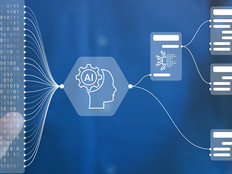NIVIDIA Brings AI Resources to the NAIRR
Other agencies involved in the pilot include the Department of Energy and the Department of Defense, as well as the National Institutes of Health, the National Institute of Standards and Technology, and the U.S. Patent and Trademark Office. They stand to benefit from pathfinding projects undertaken using the NAIRR, but the extent will depend on what’s proposed by researchers.
The initial call for allocations to high-performance computing resources ended March 1, but a second is expected as soon as this month. That will include access to in-kind contributions — computational, data, software, model, training and user support resources — from industry partners such as NVIDIA.
NVIDIA is offering about $30 million worth of resources to the NAIRR, the spokesperson says.
The first offering is access to the NVIDIA DGX Cloud product, effectively 1,000 node months of computing time on clusters stood up for the NAIRR, worth $24 million. The second offering is 1,000 seats of software licenses for NVIDIA AI Enterprise, a bundle of AI frameworks for training, inferencing and data analytics that sells for $4.5 million, the spokesperson says.
Lastly, NVIDIA is offering an AI and data analytics training curriculum called the NVIDIA Deep Learning Institute, as well as a series of hackathons, boot camps and workshops around AI and high-performance computing worth about $1.5 million, the spokesperson says.
WATCH: The U.S. Army Cyber School trains soldiers remotely and securely.
Understanding How AI Can Help Agencies
NSF researchers could begin accessing NVIDIA’s resources as early as April to study AI and its applications in areas of science and engineering including physics, chemistry, biology, environmental science and climate science, the spokesperson says.
For NVIDIA’s part, it will learn about the effectiveness of its AI products in applications they weren’t necessarily designed for.
“We expect to get stretched by these use cases, some of the brightest minds working on some of the hardest problems,” the spokesperson says. “From that, we’ll gain experience and be able to improve our products in the future.”
NVIDIA further expects to build confidence in the NAIRR model itself while gathering more information on current trends in academic research around AI and how the technology can further agencies’ missions.
“I think that there’s a lot of interest in the data sets that federal agencies will contribute to the research community, since broader access to these data sets would be a rare, relatively new thing,” the spokesperson says.










